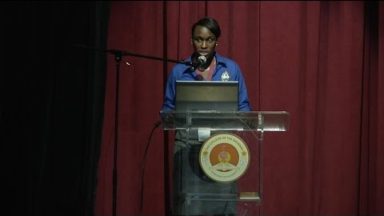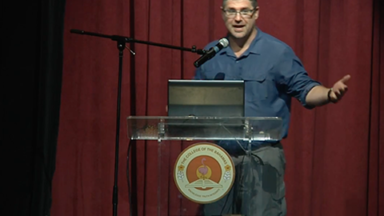The population biology, life history, and ecology of the Bahama swallow (Tachycineta cyaneoviridis): informing conservation of an endemic bird species
Presented by Maya Wilson
Maya Wilson
The Bahama swallow (Tachycineta cyaneoviridis) is a poorly known and endangered bird species that is endemic to the northern Bahamas. This research project focuses on three central questions regarding Bahama swallow population biology, life history and ecology. (1)What are the features of the current Bahama swallow population biology? Available population estimates indicate a sharp decline in population abundance since the 1970s, and recent anecdotal reports estimate 1500–4000 individuals. However, the last official surveys were conducted in 1995, and there is currently no information regarding the distribution and dispersal of Bahama swallows within their range, which have implications for gene flow and vulnerability to the threats inherent to small populations. I am conducting population surveys to estimate the abundance and distribution of Bahama swallow populations. I am using capture-recapture methods to provide another abundance estimate, and taking small blood samples for genetic analysis to assess the dispersal of populations between islands. (2) What are the life history characteristics of the Bahama swallow? The only existing study of Bahama swallow breeding biology occurred on Grand Bahama in 1995 and, thus life history data for this species are limited. I am expanding these data by closely monitoring active Bahama swallow nests during several consecutive breeding seasons. Bahama swallows breed from early April to late July, laying an average of 3 eggs in pre-existing cavities, primarily abandoned woodpecker cavities in snags of Caribbean pine (Pinus caribaea) and utility poles, cell phone towers and buildings. (3) What are the potential agents of decline of Bahama swallow populations? (A) Habitat loss and degradation: Bahamian pine forests were heavily logged through the early 1970s, and continued loss and degradation of pine forests through development and natural disasters poses an ongoing threat. I am conducting surveys of the pine forest and other habitats to assess the availability of nesting structures (e.g. snags) and excavated cavities within those structures. It is clear that cavity resources vary across the landscape, and further analysis will provide insight into extent of suitable breeding habitat. (B) Competition for nesting cavities: The Bahama swallow may face competition for cavities with other cavity-nesting bird species. I am identifying the species that excavate and utilize the same types of cavities as Bahama Swallows, and designing a cavity nest web illustrating the interactions of these species. Potential competitors include woodpeckers (Picoides villosus, Melanerpes superciliaris), the American kestrel (Falco sparverius) and the invasive House sparrow (Passer domesticus). (C) Predation: Increased abundance of nest predators could pose a threat to the Bahama swallow and other species within the cavity nesting community. I am monitoring active nests for depredation to determining whether the rates of depredation of Bahama swallow nests by these species are sufficiently high to contribute significantly to population declines. I have been working with The Bahamas National Trust and other organizations to facilitate and promote this work. One of the goals of this research project is to provide information to assist in the development of strategies to conserve the Bahama swallow and its breeding habitat.







Recent Comments